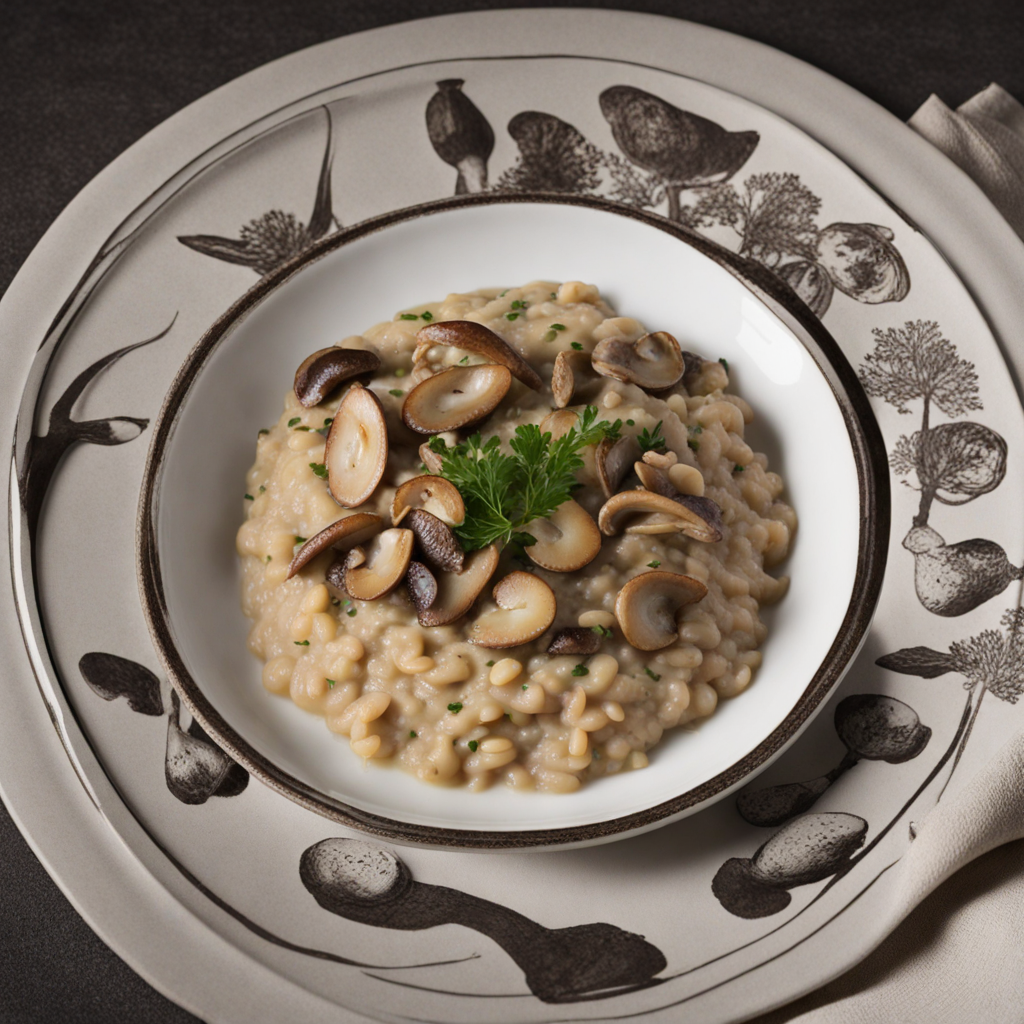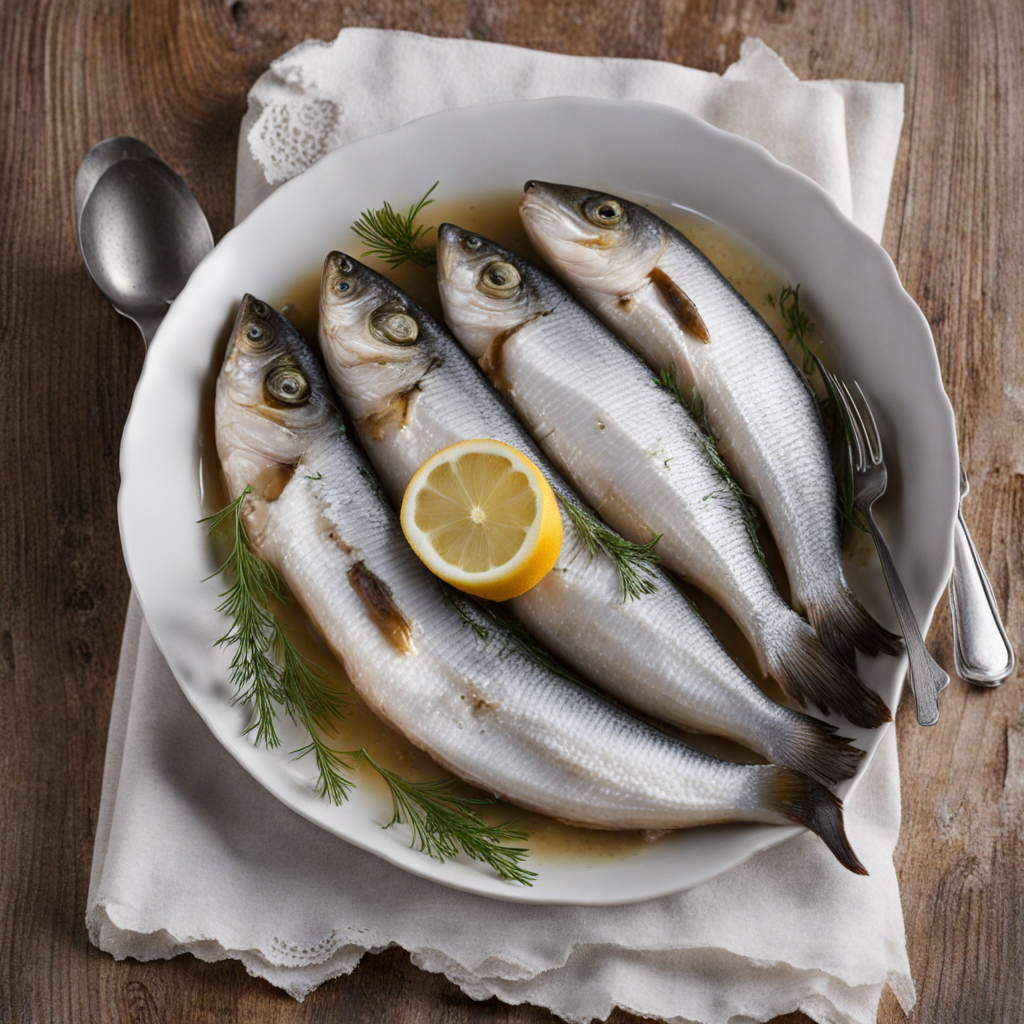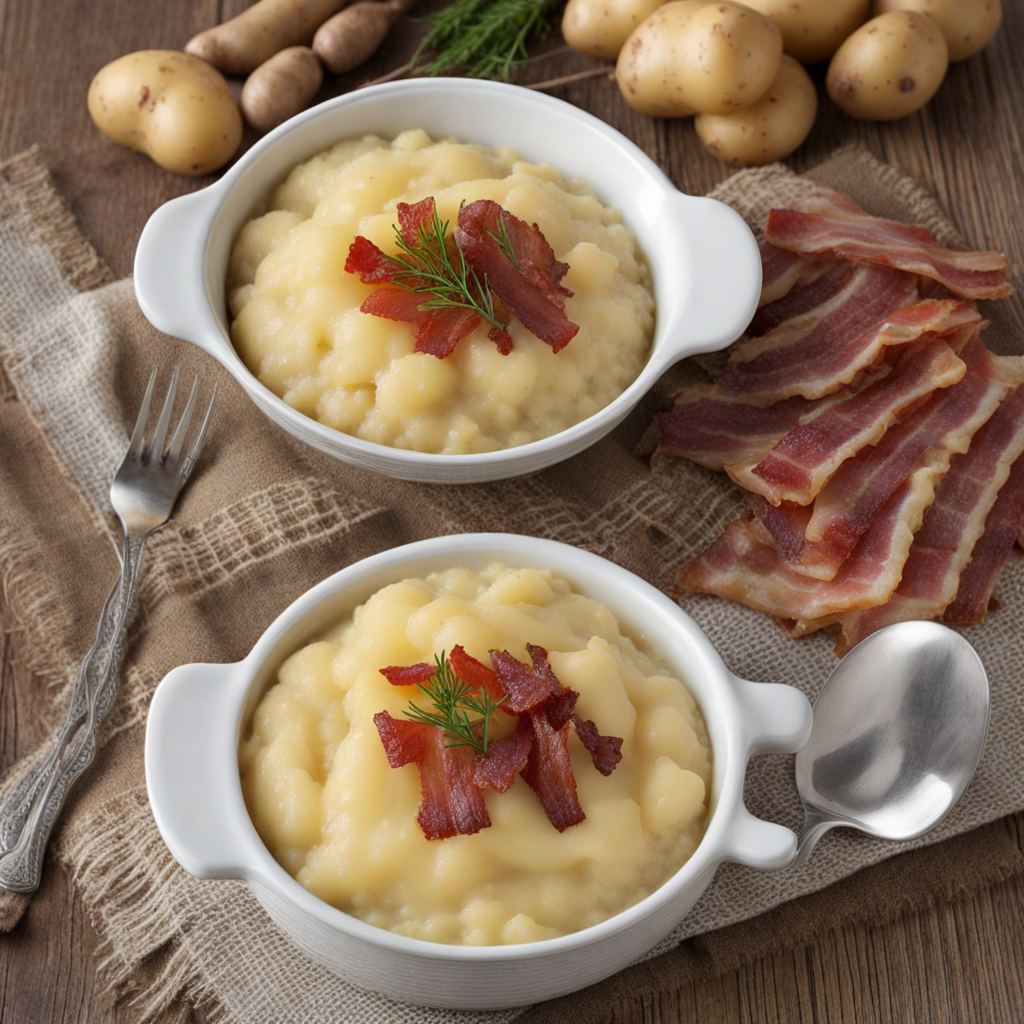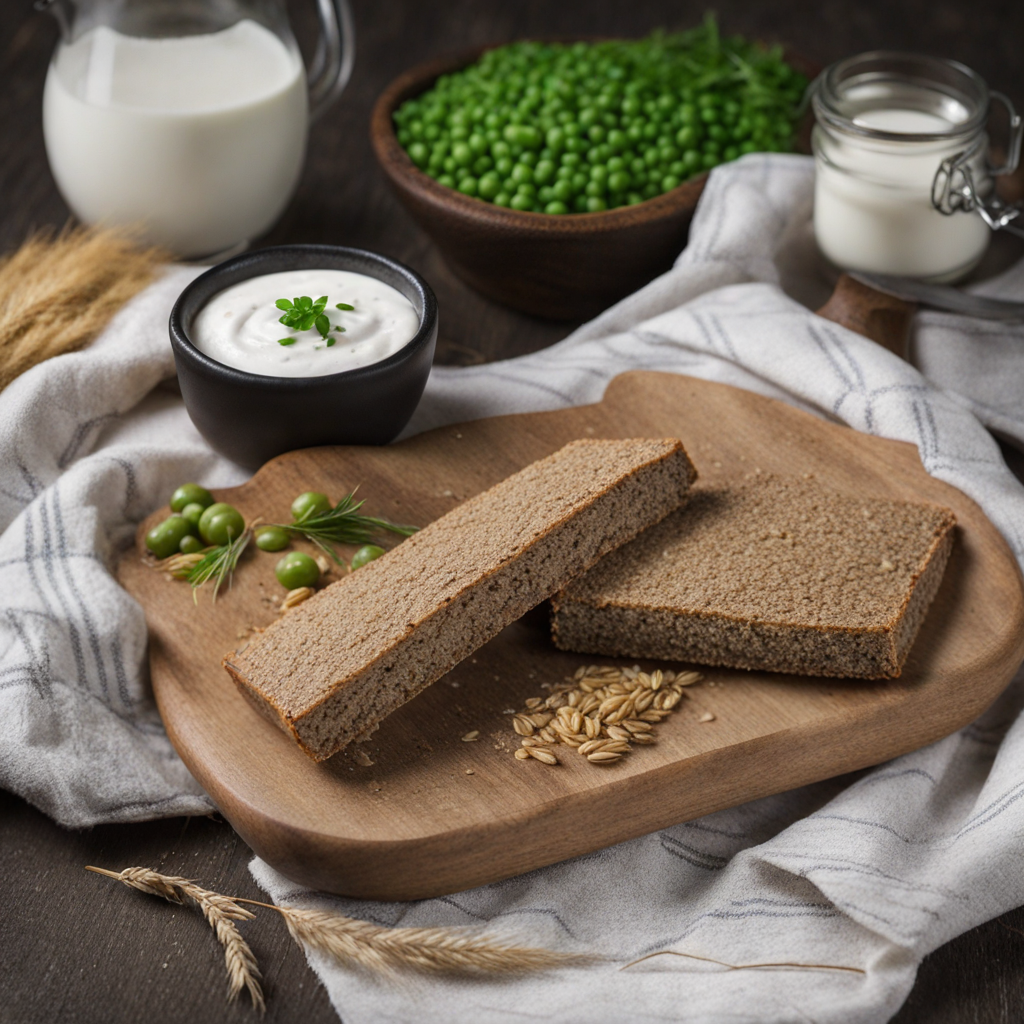Barley and Mushroom Risotto
Barley and Mushroom Risotto is a delightful Estonian dish that elevates the humble grain to new culinary heights. Unlike traditional risottos that often utilize Arborio rice, this unique interpretation incorporates barley, lending a nutty flavor and a chewy texture that enhances the overall experience. The dish is typically prepared by slowly simmering the barley in a rich broth, allowing it to absorb deep flavors while achieving a creamy consistency. The addition of earthy mushrooms, often foraged from the surrounding Estonian forests, imparts an aromatic quality that resonates with the natural landscape of the region. As the barley cooks, it becomes infused with the savory notes of sautéed onions and garlic, creating a fragrant base that complements the mushrooms beautifully. The use of local herbs, such as dill or thyme, adds a fresh layer of complexity, highlighting the simplicity and purity of Estonian ingredients. This dish harmoniously balances the robustness of the mushrooms with the wholesome quality of barley, making it both comforting and nourishing. To finish, a sprinkle of grated cheese or a drizzle of cream may be added, enriching the risotto's texture and flavor. Served warm, Barley and Mushroom Risotto is not just a meal; it’s a taste of Estonia’s culinary heritage, where traditional methods meet the bounties of nature. Each bite is a celebration of local produce, offering a modern twist on a classic dish that invites food enthusiasts to explore the unique flavors of this Baltic nation.
How It Became This Dish
Odrakruubirisotto Seentega: A Culinary Journey Through Estonia Estonia, a small but culturally rich country in Northern Europe, boasts a cuisine that reflects its unique history, geography, and agricultural practices. One of its lesser-known yet fascinating dishes is Odrakruubirisotto seentega, a barley risotto with mushrooms. This dish is not just a feast for the palate; it tells the story of Estonia's agrarian roots, its connection to nature, and its evolving culinary landscape. #### Origins: A Grain of Tradition The origins of Odrakruubirisotto can be traced back to the ancient agrarian practices of the Estonian people. Barley, or "odra," is one of the oldest cultivated grains in the region, with evidence of its use dating back thousands of years. The Estonian landscape, characterized by its cold climate and fertile soil, is particularly suited for growing barley, which has historically been a staple in the Estonian diet. In rural areas, barley was not only a source of sustenance but also a significant part of local customs and traditions. It was often used in various forms—ground into flour for bread, boiled as a porridge, or fermented for beer. The practice of cooking barley with mushrooms, or "seentega," is rooted in the Estonian tradition of foraging. The vast forests that cover much of Estonia are abundant with mushrooms, and locals have long harvested these natural treasures. #### Cultural Significance: From Peasantry to Culinary Art For centuries, Odrakruubirisotto seentega was a dish of the peasantry, enjoyed during humble gatherings and family meals. It reflects the Estonian ethos of valuing simplicity and sustainability in food. The ingredients are typically local: barley, mushrooms, onions, and sometimes a hint of cream or butter. These elements come together to create a dish that is hearty, nutritious, and comforting. Mushrooms, especially, hold a special place in the hearts of Estonians. Foraging for mushrooms is a beloved pastime, and many families have their secret spots in the woods where they gather different varieties, from chanterelles to porcini. This connection to the land and the seasonal rhythms of nature is a cornerstone of Estonian culture, and Odrakruubirisotto serves as a delicious embodiment of that relationship. As Estonia transitioned from a largely agrarian society to a more urbanized one throughout the 20th century, the perception of traditional dishes like Odrakruubirisotto began to shift. In the post-Soviet era, as Estonia regained its independence in 1991, there was a resurgence of interest in national identity, which extended to food. Chefs began to explore traditional recipes with modern techniques and presentations, elevating dishes that had once been seen as rustic fare. #### Development Over Time: A Modern Interpretation In contemporary Estonia, Odrakruubirisotto has undergone a transformation. While it retains its core ingredients, modern chefs have experimented with flavors, textures, and presentation. The dish has evolved into a more sophisticated culinary experience, often featuring gourmet mushrooms, artisanal barley varieties, and innovative garnishes. One of the most significant developments in Estonian cuisine has been the emphasis on local and seasonal ingredients. This philosophy has led to a newfound appreciation for dishes like Odrakruubirisotto, which showcase the bounty of the Estonian landscape. Many restaurants now source their ingredients directly from local farmers and foragers, ensuring that the flavors of the dish remain true to the region. Additionally, the rise of the Estonian food scene has seen Odrakruubirisotto seentega gaining recognition at various food festivals and culinary events. Chefs are not only showcasing this dish on their menus but also using it as a canvas for creativity, pairing it with local wines, or incorporating international influences while respecting the traditional essence. #### Nutritional and Environmental Aspects Beyond its culinary allure, Odrakruubirisotto seentega is noteworthy for its nutritional benefits. Barley is a whole grain packed with fiber, vitamins, and minerals, making it a healthful choice. The mushrooms add an array of nutrients, including antioxidants and essential vitamins. This combination results in a dish that is not only satisfying but also nourishing. Moreover, as the world grapples with issues of sustainability and food security, dishes like Odrakruubirisotto highlight the importance of utilizing local resources. By relying on local grains and foraged ingredients, Estonians are practicing a form of sustainable eating that minimizes their ecological footprint. This practice aligns with a broader global movement towards understanding where our food comes from and making conscientious choices about our diets. #### A Reflection of Estonian Identity Odrakruubirisotto seentega is more than just a meal; it is a reflection of Estonia's identity—a blend of historical roots, cultural significance, and modern innovation. It embodies the spirit of the Estonian people, who take pride in their land and its offerings. As the country continues to navigate the complexities of globalization, dishes like Odrakruubirisotto serve as a reminder of the importance of tradition and the value of local ingredients. In recent years, as Estonia has gained recognition on the global culinary stage, Odrakruubirisotto has become a symbol of the country's gastronomic heritage. Food enthusiasts and travelers seeking authentic experiences are increasingly drawn to this dish, eager to taste a piece of Estonia's history. #### Conclusion: A Dish for the Ages Odrakruubirisotto seentega is a dish that encapsulates the essence of Estonia—a land where tradition meets innovation, and where the simple pleasures of food are celebrated. Its journey from rustic peasant fare to a modern culinary delight reflects broader societal changes and a renewed appreciation for local ingredients. As you savor a bowl of Odrakruubirisotto seentega, you are not just enjoying a meal; you are partaking in a rich tapestry of history and culture that continues to evolve. This humble dish, with its deep roots in Estonian soil and its contemporary flair, invites us all to reconnect with the land, the seasons, and the stories that food tells.
You may like
Discover local flavors from Estonia







